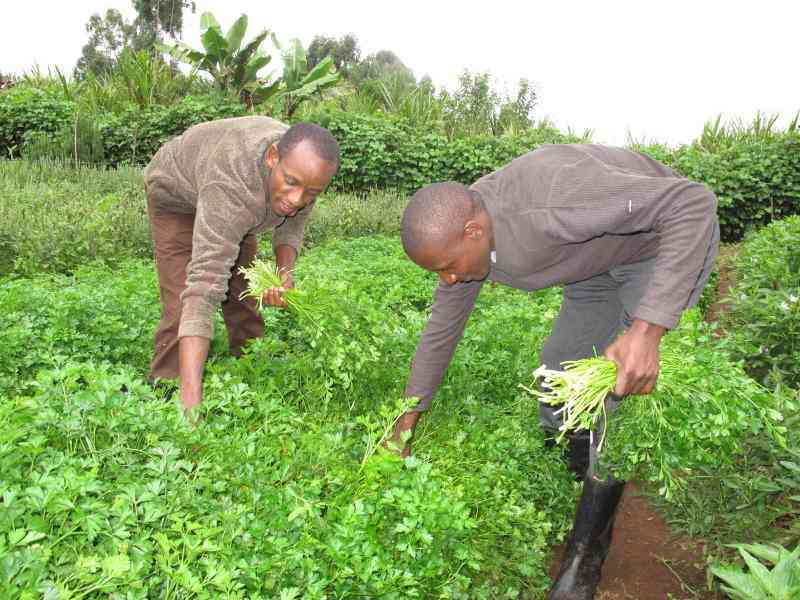
I recently hosted a group of poultry farmers for a day-long training in Naivasha town. Among the many topics we covered included housing, brooding, disease control and vaccination, broiler, layers and kienyeji management as well as record keeping. Most of my audience seemed familiar with most topics other than record keeping.
Long gone are days that farming was done as a hobby. Although there is still a small group of people who do this for leisure, the rest of us are venturing into poultry farming for the single reason - profit making.
For any business to succeed, expenditure and income have to be factored in to know if the venture is sustainable or not.
Records should be simple and clear. Poultry business records can be divided into three main categories.
Management records
This type of record will include information related to management issues. Such includes workers shifts, date of chick placement, number, date and type of vaccination or medication given, death or loss of birds, type of feed given and amount, and any other activity done that is related to management.
In layers, it will include other management practices such as de-worming date, beak trimming as well as culled birds. Management records are helpful when assessing production levels of the birds. One can go back and trace where things went wrong or find out if the right steps were taken during production. Disease incidences should also be included- with subsequent action taken.
Financial records
Here, we enter all financial transactions that have occurred and are related to the production of the particular flock of birds. Farmers are keen and good at entering records of huge farm purchases/ expenditure such as purchase of day-old chicks and feeds.
Smaller expenses on items such as vitamins, wood shavings and vaccination costs, transport costs are not jotted down in the records. An example is when farmers incur costs that may not be directly related to poultry. Assuming a farmer delivers feeds for both his cows and poultry- he should allocate the transport charges to each of the animal group proportionately depending on the number of sacks or kilos delivered.
During the poultry management training, I realised farmers overlook some of these important production costs which would normally add up to huge amounts of money. Another example would be in broiler production whereby the cost of slaughtering mature birds and transporting the meat to the market is not factored in. At the end of the day, the financial records present will not give the right picture of production cost if all these details are not included.
Production records
Production records are important in assessing productivity. In broilers/ meat producers, the daily/ weekly weight gain is an indicator of productivity. This is then compared to the standard chart and changes can then be made either in feeding management if need be. Although most farmers weigh the birds during slaughter it is advisable to be taking weekly weight to catch any negative deviations earlier on before day of slaughter. In such cases amendments are made and losses are minimised. In layers, both the growth rate before point-of-lay and egg production thereafter should be used as production markers. At this point we evaluate point of lay (age of bird at production of first egg), percentage lay- number of birds laying in relation to total number of birds as well as peak production age. From this information a laying curve can be extracted and compared to the standard curve.
The writer is a veterinary surgeon and runs Nature Kuku, a farm in Naivasha that produces kuku kienyeji breed and trains small holder farmers.
Stay informed. Subscribe to our newsletter
[email protected]
 The Standard Group Plc is a
multi-media organization with investments in media platforms spanning newspaper
print operations, television, radio broadcasting, digital and online services. The
Standard Group is recognized as a leading multi-media house in Kenya with a key
influence in matters of national and international interest.
The Standard Group Plc is a
multi-media organization with investments in media platforms spanning newspaper
print operations, television, radio broadcasting, digital and online services. The
Standard Group is recognized as a leading multi-media house in Kenya with a key
influence in matters of national and international interest.
 The Standard Group Plc is a
multi-media organization with investments in media platforms spanning newspaper
print operations, television, radio broadcasting, digital and online services. The
Standard Group is recognized as a leading multi-media house in Kenya with a key
influence in matters of national and international interest.
The Standard Group Plc is a
multi-media organization with investments in media platforms spanning newspaper
print operations, television, radio broadcasting, digital and online services. The
Standard Group is recognized as a leading multi-media house in Kenya with a key
influence in matters of national and international interest.









